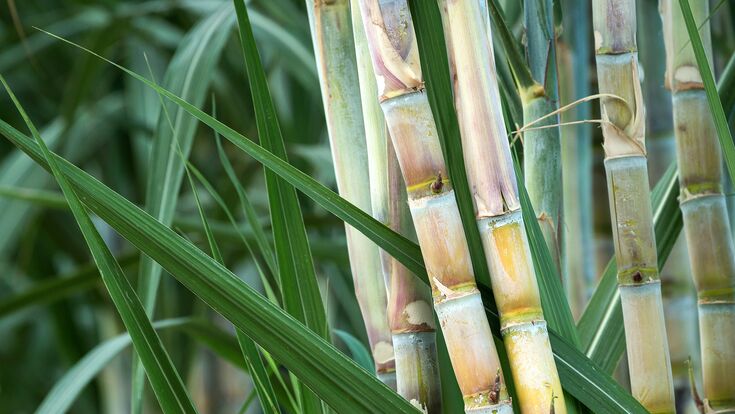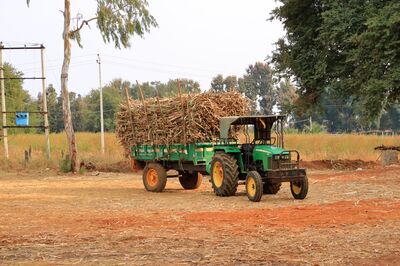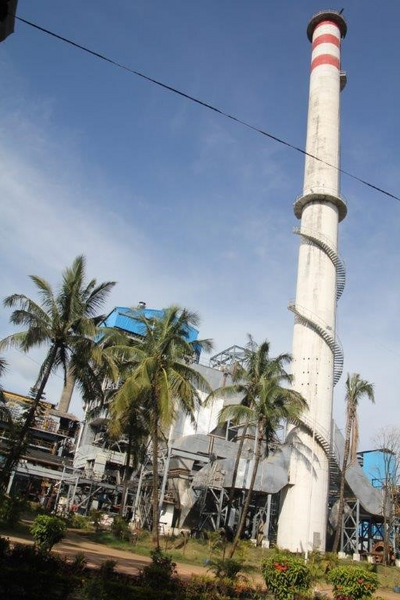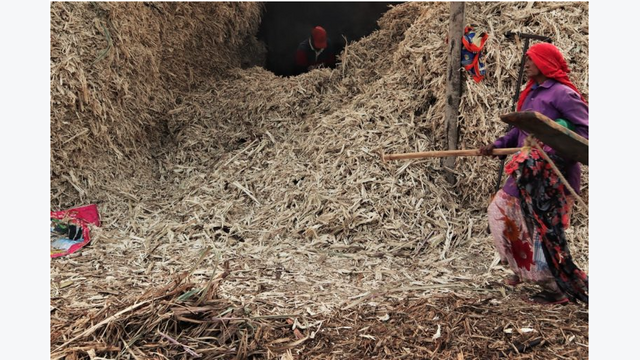Energy from Waste : Sugar Mill Waste-to-Energy in India: Successful Cogeneration

India and Brazil rank as the world's top two sugar producers every year. Which country is first and which is second can vary from year to year though. Brazil, however, remains the largest sugarcane producer, followed by India. During the 2022-23 sugar season (that ends on 30 September 2023), the industry in India pegs the year's output at 36 million tons.
Sugarcane farming in India dates back several centuries. Indian sugarcane workers were sent to other British colonies in Africa and Asia and often stayed on in those countries for generations to come. For example, from 1879 to 1916, 60,000 Indian workers were shipped from India to Fiji to supply labour to the latter's nascent sugar industry. The system of indenture bonded the workers for a minimum of five years to their employer, the Colonial Sugar Refining Company of Australia (CSR).
To fast-track to the 20th century, during 1931-32, the colonial government in India imposed an ad valorem import duty of 185% on sugar imports from Java, which led to a substantial increase in the number of sugar factories in the country – from 29 to 137 between 1931-32 and 1936-37, and later to around 140 factories in 1946-47 (Independence). According to Indian Sugar Mills Association (ISMA), as on 15 March 2023, 530 mills had started their seasonal operations within the sugarcane-intensive states of Uttar Pradesh, Maharashtra, Karnataka, Gujarat, Tamil Nadu, Punjab, Haryana, Andhra Pradesh, and Telangana.
Most of the sugar factories are situated in rural areas, so socio-development activities are encouraged to uplift standards of living in those areas – of the labourers, cane cutters, farmers and lorry drivers, and the mill staff, with the plant management providing health, education, and other social services.

Win-Win Benefits
Bagasse is the dry, pulpy, fibrous material that remains after crushing sugarcane stalks to extract their juice. The setting up of cogeneration plants to utilise this waste, was a step towards win-win benefits for all stakeholders – more jobs, clean energy for the grid and auxiliary use, reduced dependence on fossil fuels, additional revenue for the sugar mill, less transportation cost of raw material, and less transmission losses, to name a few. This led to favourable Indian government policies, and initiatives by international agencies such as the US Agency for International Development (USAID) in the 1980s and 1990s, so the bagasse cogeneration industry grew in leaps and bounds.
Related topic: Food waste in India: Prevention strategies and outcomes
Cogeneration is the concept of producing two forms of energy from one fuel – heat, and electrical or mechanical energy. In a cogeneration plant, very high efficiency levels in the range of 75-90%, can be reached, as compared to conventional power plants where the efficiency level is only around 35%. This is because the low-pressure exhaust steam coming out of the turbine is not condensed, but is recycled back to the factory for process use. The power produced by these cogeneration plants is used within the plant, with the surplus being exported to the grid
As of 30 June 2023, the bagasse cogeneration sector stood at 9,433.56 MW and biomass (non-bagasse) cogeneration at 814.45 MW in India – as confirmed by the country's central Ministry of New and Renewable Energy (MNRE). There are also reports of around 70 cogeneration projects of 800 MW under various stages of implementation.
Like what you read? Subscribe to our newsletters!
Tariff Woes
The Central Electricity Regulatory Commission (CERC) is the central body that regulates the various aspects of generation, transmission, and distribution at the national level, with state electricity regulatory commissions (SERCs) at the state level. These commissions play a crucial role in setting tariffs for the cogeneration power.
During the late 1990s, the Indian Government announced incentives for sugar factories to adopt cogeneration power plant technologies with higher temperature and pressure boilers to generate excess power to the state grid and earn extra income. This was to help them pay better prices and - in time - to the sugarcane farmers. Most of the states adopted the same in toto. Almost two decades later, the scenario seems to have significantly changed. Maharashtra and Uttar Pradesh, the largest producers of sugarcane in the country, and hence with the maximum bagasse-based cogeneration power plants, are reported to continue to encourage the sector by setting higher tariffs for sugar cogeneration power. However, the same cannot be said about some of the other states, especially the southern states of Karnataka, Tamil Nadu, and Andhra Pradesh. Many of the sugar plants in these states have reported dissatisfaction with their state governments’ policies. Some have preferred to shut down their cogeneration power plants during the off-season, leading to a national waste of installed power generation capacity.
It is hoped that the Government of India will step in to ensure a uniform tariff policy across all states, for power exported by bagasse-based cogeneration power plants, if the real benefits are to be passed on to the sugarcane farmers and also to enable the sugar factories to survive. This is apart from the encouragement given to ethanol production of late.
More on energy-from-waste: Heat Recovery from Compost: It's getting hot in here!
Scope for Better Efficiency
Though there are several successful case studies of such plants in sugar mills all over India, sources indicate that if steam generation temperature and pressure are raised from 400 deg C to 485 deg C, and 33 bar to 65 bar respectively, 80 kWh of more electricity can be produced per ton of sugarcane crushed. As per experts, this upgrade, and other technical and policy initiatives to enhance this sector are required to increase the viability of sugar mills, which have been under tremendous financial stress in the past decade. Some of these are:
- Waste heat recovery of the flue gases can be further harnessed by the installation of bagasse dryers for drying the bagasse further.
- Technical and operating efficiency of the existing plants can be improved by replacing inefficient machinery with new energy efficient equipment, and by optimising the design and effective implementation of cogeneration projects.
- The use of other biomass with bagasse up to 20% in multi-fuel boilers needs to be encouraged – for example, pelletisation of cane trash left in the fields and of other biomass has a huge scope.
- Cogeneration plants should be encouraged to operate during the off-season by offering a suitable GBI (Generation-Based Incentive) by the Government of India.
- Given the huge resources available under the Compensatory Afforestation Fund Management and Planning Authority (CAMPA), it should earmark 20% for bio-energy/bio-fuel tree plantations to increase the supply of biomass fuel.
- The cost of transmission lines from the sugar factory to the substation should be borne by the State Government/Electricity Board, to reduce the cost burden on the sugar factory’s cogeneration project viability.
- Gasification of bagasse and its use in gas turbines may be explored for cogeneration projects as future technology with better and overall thermal efficiency. The necessary scheme for financing may be formulated to develop this.
- MNRE notified the National Bioenergy Programme on November 2, 2022, which will now continue until 2025-26. The first phase will have a budget outlay of Rs. 858 crore (1 crore = 10 million). This programme will focus on waste to energy (large biogas, bio-CNG, and power plants), biomass (to support the setting up of pellets and briquettes for use in power generation and non-bagasse-based power generation projects), and smaller biogas plants in rural areas.
- In a press release in February 2023, as per India’s Ethanol Blending roadmap, the Prime Minister launched E20 fuel at 84 retail outlets of oil marketing companies (OMCs) in 11 states/union territories. E20 is a blend of 20% ethanol with petrol. The government aims to achieve a complete 20% blending of ethanol by 2025, and some OMCs are setting up 2G-3G ethanol plants to facilitate this. Additionally, the immediate commencement of ethanol-blended diesel would give a tremendous boost to the green energy effort.
- A complete scheme for supporting a feedstock/crop-residue supply chain management system, including for cane trash, the burning of which has become an air pollution hazard in the past few years, is required. This should incorporate assistance components for harvesting equipment such as balers, as has been successful in the state of Punjab, and the setting up of biomass depots, and mechanisms for collection, densification, transportation, and storage.
- The sectoral and unit exposure limits as per Credit Monitoring Arrangement (CMA) 2000 guidelines mandated by the Reserve Bank of India for cooperative sector banks, need to be revamped to ensure streamlined financing options.
- Trading of energy in the form of Renewable Energy Certificates (RECs) have been allowed since 2010 for which CERC as well as the SERCs have set various regulations. But this has become a loss-making business due to poor demand in the market. Secondly, the RECs lapse after around two years from their issue date, if not traded/sold during the period. Under such conditions, the factories have to face heavy losses. MNRE should take note and get this barrier removed.
Case Study
Dalmia Bharat and Sugar Industries Limited (DBSIL), Unit - Shri Datta Asurle-Porle in District Kolhapur (Maharashtra), has been a constant driver of high-efficiency cogeneration. It is one of the leading private sugar factories, with a sugar plant capacity of 8,500 tons of cane per day (TCD) as well as a 22.5 MW bagasse-based cogeneration plant.
The cogeneration plant began commercial production in March 2014, set up with the latest technology, considering sugarcane crushing season operations and off-season power plant operation. The plant's technical performance has been consistently excellent and achieved all parameters better than those designed in 2015. Due to its various energy-saving measures and constant monitoring, the Cogeneration Association of India Award Committee awarded this plant the "Best Cogeneration Plant 2022 Award" (for above 67 kg/cm2 pressure category) in the private sector. The technical parameters evaluated included the steam-fuel ratio, specific steam consumption, auxiliary power consumption, surplus power sold to the grid, etc. – the objective being optimisation of operational parameters so that maximum capacity could be utilised from the installed equipment.
The award was presented by Nitin Gadkari (Minister, Road Transport and Highways, Government of India), along with Sharad Pawar, Member of Parliament (Rajya Sabha) at Mumbai on 27 August 2022 to Pankaj Rastogi, CEO, Pradeep Mittal, AED (Sugar) and S Rangaprasad - Unit Head, DBSIL.
Over the past few years, the plant has generated around 135-172 kWh per ton of cane crushed, with maximum export per ton of cane crushed ranging from 104-136 kWh.
The table below lists the locations of the Dalmia Group plants:

| Type of Plant | Unit | Ramgarh | Ninaidevi | Kolhapur | Nigohi | Jawaharpur |
|---|---|---|---|---|---|---|
| Sugar Cogeneration Plants | MW | 25 | 6 | 26 | 28 | 27 |
| Distillery Plants | Yes | No | Yes | Yes | Yes |
Exporting Know-how
India is also offering technical assistance to other less developed countries that wish to revamp their sugar industry. For example, at a February 2023 event in India, Fiji’s sugar industry minister highlighted that this industry supports 200,000 people, directly or indirectly, in a country of 900,000. So the revival of the sugar industry assumes critical importance, to increase production by 200,000 tonnes every year to reach three million tonnes eventually. However, the challenges being faced range from shortage of labour, an ageing railway line to transport sugarcane, to inefficient machinery. Fiji is now approaching India to assist with these issues and is even open to outsiders leasing land in Fiji for sugarcane farming. They are also looking for Indian assistance to build new modern sugar mills to write off the existing loan extended to Fiji about 20 years ago of around $50 million from the Indian government through the Exim Bank of India. He disclosed that the funds were supposed to be used to buy machinery from Indian suppliers, but were instead misused by middlemen, who arranged equipment with second-grade materials.
Related topic: Recycling in India: A Market in Transition
Next Steps
The overall aim of India’s Integrated Bio-Energy Mission is to help achieve the greenhouse gas (GHG) emissions reduction targets as agreed in the Nationally Determined Contributions at COP21 through the progressive blending/substitution of fossil fuels such as coal, petrol, diesel, natural gas, and LPG, with biomass pellets, bio-ethanol, biodiesel, bio-methane, and similar green fuels, both for electrical and non-electrical uses.
The Cogeneration Association of India (Cogen India) was set up in 2001 to address the problems of stakeholders of the bagasse-based cogeneration sector and is now working with the government to achieve India’s GHG targets by improving policy, and with the industry to increase efficiency and build capacity. Sugar mills too need to gear up and become more cost-effective, operation-efficient, and quality-efficient across the board. Further, the industry now needs to diversify into sugar-cogeneration-ethanol complexes to explore other revenue options.


